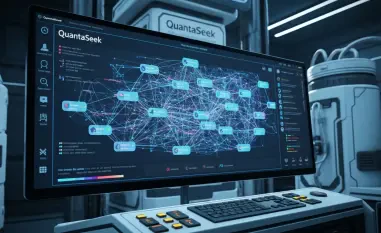In an era where artificial intelligence drives innovation at an unprecedented pace, the dark side of this technological revolution has emerged as a formidable threat, with state-linked actors exploiting AI platforms for malicious purposes. A San Francisco-based startup, Factory, recently found itself at the epicenter of a sophisticated cyberattack orchestrated by threat actors primarily from China, Russia, and Southeast Asia. This incident, uncovered in October, exposed a calculated attempt to hijack Factory’s software development platform as part of a sprawling global cyberfraud operation. The attackers leveraged advanced AI tools to adapt to defenses in real time, revealing a chilling trend of state-sponsored cybercrime targeting cutting-edge tech companies. This alarming scenario underscores the urgent need to understand how such attacks unfold and, more importantly, how they can be thwarted by innovative firms like Factory, which managed to disrupt this high-stakes operation through vigilance and strategic response.
Uncovering the Sophisticated Threat
The cyberattack on Factory came to light on October 11, when unusual activity was detected across its Droid product, involving thousands of organizations engaging in suspicious behavior over several days. The perpetrators, some tied to state actors from China, exploited free-tier access and onboarding pathways to infiltrate the platform, aiming to chain together resources from multiple AI providers into a large-scale fraud network. Malicious traffic traced back to data centers and internet service providers in China, Russia, and Southeast Asia pointed to a coordinated effort. Investigations further uncovered Telegram channels promoting free or discounted access to premium AI coding tools, alongside resources for vulnerability research and other illicit activities. This discovery painted a grim picture of a well-organized operation designed to repurpose AI infrastructure for criminal ends, highlighting the vulnerability of accessible entry points in tech platforms that prioritize user growth over stringent security measures.
Beyond the immediate tactics, the attackers employed AI coding agents to dynamically counter Factory’s defenses, showcasing a level of sophistication rarely seen in typical cyberattacks. This adaptive approach allowed the threat actors to test the platform’s resilience in real time, adjusting their strategies to bypass security protocols. The apparent goal was not just financial gain but also to establish a proof of concept for AI-driven attack infrastructure. According to industry analysts, this dual motive suggests a broader strategic intent to benchmark their capabilities against leading AI firms. Factory’s ability to detect and track these anomalies early on was pivotal, as it prevented the attackers from fully embedding their network within the platform. This incident serves as a stark reminder that as AI technology advances, so too do the methods of those seeking to exploit it, necessitating equally advanced countermeasures to protect critical digital assets from being weaponized.
Strategic Motives and Industry Implications
Delving deeper into the motivations behind the attack, insights from Forrester analyst James Plouffe shed light on the attackers’ likely objectives, which extended beyond mere profit to include strategic espionage. The state-linked actors appeared to be probing the detection and response mechanisms of top AI companies like Factory, using the attack as a testing ground for their own capabilities. This calculated effort aimed to map out the strengths and weaknesses of industry leaders, potentially for future geopolitical or economic advantage. A parallel disclosure by another AI firm, Anthropic, about a similar espionage campaign reinforces the notion of a coordinated pattern targeting frontier technology providers. Such incidents reveal a disturbing trend where AI platforms are not just tools for innovation but also battlegrounds for state-sponsored actors seeking to undermine the sector’s integrity through covert operations.
The broader implications of this attack ripple across the AI industry, signaling a critical vulnerability where rapid innovation often outpaces the development of robust security frameworks. Factory’s proactive response, which included sharing detailed findings with security agencies and regulatory authorities, exemplifies the importance of collaboration in combating these threats. The incident highlights that such attacks are not isolated but part of a larger effort to exploit emerging technologies for illicit purposes. As state-linked groups grow more adept at leveraging AI for cybercrime, the need for heightened vigilance and information sharing becomes paramount. This case also underscores the dual-use nature of AI, where tools designed for progress can be repurposed as weapons if safeguards are not prioritized, pushing the industry to rethink how accessibility and security are balanced in an increasingly hostile digital landscape.
Lessons Learned and Future Defenses
Reflecting on how Factory managed to halt this state-linked cyberfraud operation, it’s clear that rapid detection played a crucial role in limiting the damage. By identifying unusual patterns in user behavior early, the company was able to isolate the malicious activity before it could fully infiltrate their systems. The use of advanced monitoring tools and real-time analytics allowed Factory to stay one step ahead of the attackers, even as they adapted their tactics using AI coding agents. Collaboration with external entities, including cybersecurity experts and government bodies, further amplified their response, ensuring that the threat was not only contained but also thoroughly documented for future prevention. This incident demonstrated that a multi-layered defense strategy, combining technology and partnerships, is essential for tech firms operating at the forefront of AI innovation to protect against increasingly sophisticated adversaries.
Looking back, the successful disruption of this attack by Factory served as a pivotal moment for the AI sector, exposing the intersection of cutting-edge technology and cybersecurity risks. Moving forward, the incident offers actionable lessons for other companies to fortify their defenses against similar threats. Implementing stricter access controls, especially for free-tier services, and investing in AI-driven threat detection systems can help mitigate risks at entry points. Additionally, fostering international cooperation and establishing industry-wide standards for rapid information sharing will be critical to countering coordinated attacks by state-linked actors. As the digital landscape continues to evolve, this case stands as a reminder that safeguarding AI development requires not just technological innovation but also a unified commitment to security, ensuring that the tools shaping the future are protected from those who seek to exploit them for harm.













